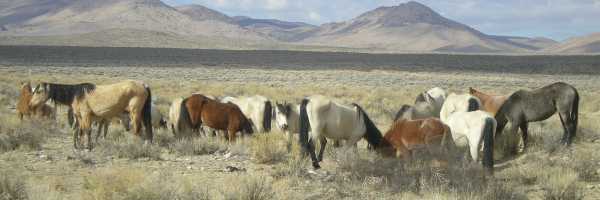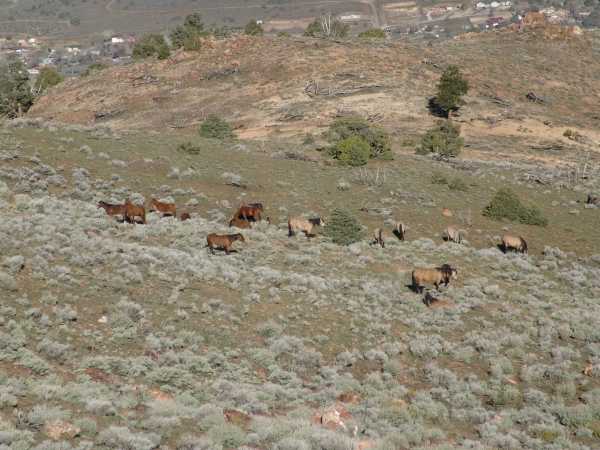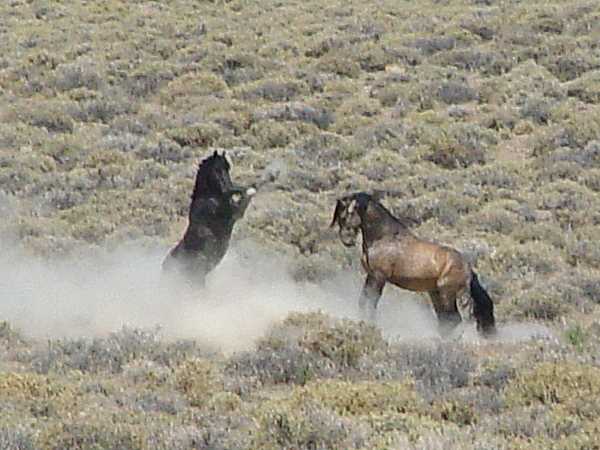|
In 2007 the LRTC Wild Horse Mentors were asked by the Department of Agriculture to respond to a horse problem in Silver Springs. This call started an incredible adventure into horse color genetics. When we arrived we found several horses that had gotten through the horse range boundary fence onto a residential lot. The springs on the range had dried up and the horses discovered a garden hose running where the resident was watering some trees and they "broke in" for a drink. (See The "Hard Luck Buckskins" in Search of Water.)
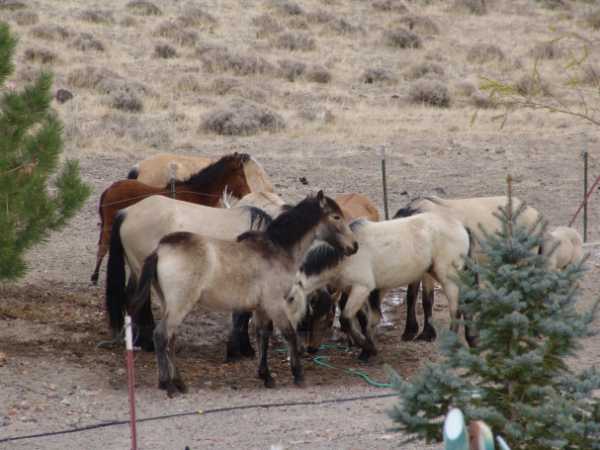
We placed a temporary tank outside the fence for the horses and they returned to the range to drink.
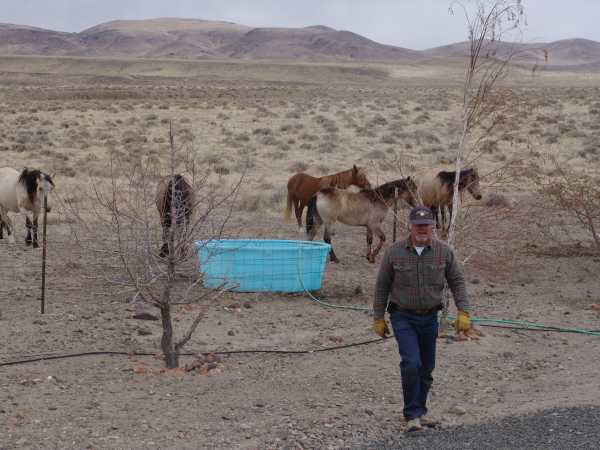
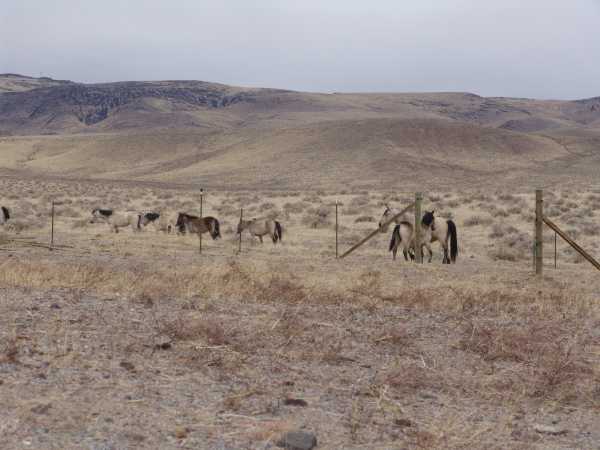
Shortly afterward we installed a permanent water source for the horses. However we became fascinated by the colors found in this band and did some research. In making inquiries with Mike Holmes of the Department of Agriculture, we learned about the history of these horses. The modern day foundation sire of this group of horses was "Bubba," an old world style horse that actually has dun characteristics - a dorsal stripe and dark ear tips. It is likely that Bubba carries down genes from the original 500 "Spanish mustangs" that records indicate were brought from San Diego to a valley near Susanville in 1860.
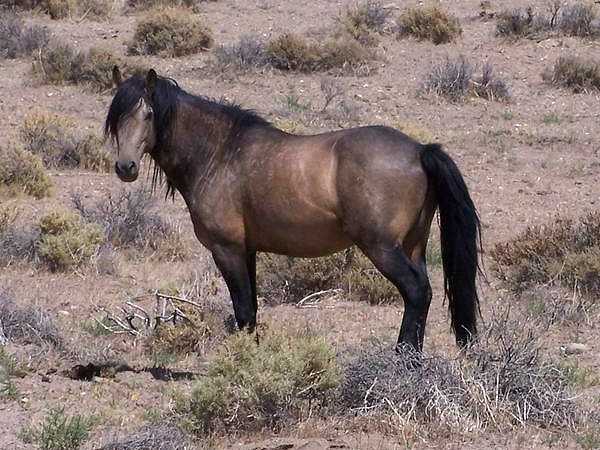
Bubba and his harem originally roamed the range in what now is southeast Fernley. Shortly after Y2K the growth rate in Fernley displaced the horses and they were relocated to the western end of the range. There they were known by locals and tourists as the "Geiger Grade Buckskins." This spectacular band amazed tourists for years as they ranged on the slopes below SR-341 on Geiger Grade overlooking the outskirts of Reno and Pleasant Valley. The buckskins (right) with Peacemaker's band (left) in 2004.
|
